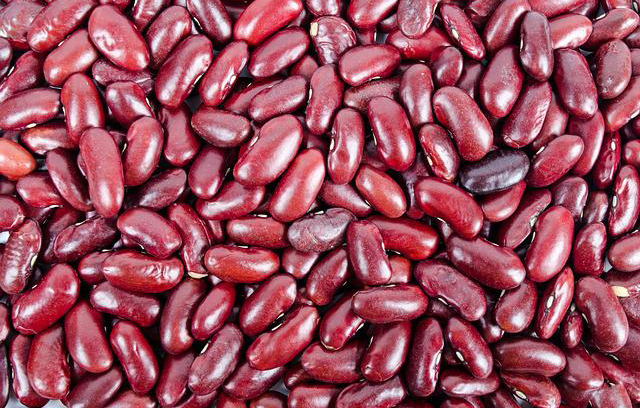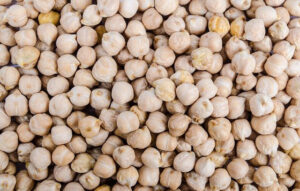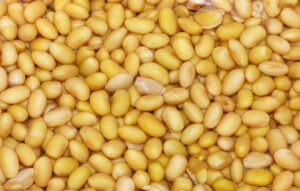GrainProTrade – Beans wholesale at producer prices
For GrainProTrade deals with wholesale and sale of beans and all other agricultural crops from Ukraine, Kazakhstan, Moldova and other countries. Ready to arrange delivery to the specified address is a convenient way for you, with the preparation of the package of accompanying documents that ensure the safety of the cargo, hassle-free and its consequences throughout the route.
The main advantages of the ZusaWorking with our company:
- the high level of professionalism of our entire team, which ensures problem-free collection and delivery of quality raw materials in the shortest possible time;
- a reasonable price level, since we deal directly with bean producers across the country, e.gusamen work;
- possibility of various payment methods and convenient delivery, the method of which you choose yourself, even after consultation with our manager;
- completion of collective orders of any complexity.
- Contact our managers on the website or by phone. We offer high quality products at an optimal price.
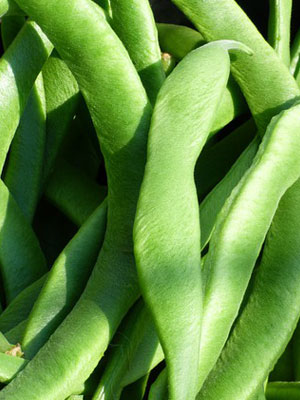
Beans

Beans
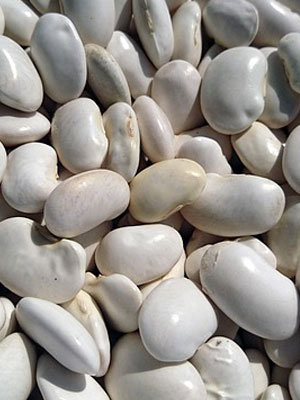
Beans

Beans
All about beans
Beans are a rich source of protein, starch, some unsaturated fatty acids, fiber, vitamins and minerals. The Harvard Medical School website reported a value of 24 ± 4 in the glycemic index table for beans, allowing the beans to be related to low glycemic index foods.
The nutritional properties of beans largely depend on the amount of protein in them, and to a lesser extent on the content of carbohydrates, vitamins and minerals. Depending on the variety, the protein in beans can range from 15% to 35%. On average, one hundred grams of dried bean seeds provide a person with 20-25 grams of protein - that is, they provide about 20% of the recommended daily allowance. In terms of the amount of protein, beans are quite comparable to meat. In addition, the digestibility of protein for dry beans is almost 80%. The main protein fractions of beans are globulin (50-70%) and albumin (10%). Among the amino acids in dry beans, lysine (6,5–7,5 g/100 g protein) and tyrosine are dominated with phenylalanine (5,0–8,0 g/100 g protein).
The starch makes up almost 50% of the weight of the bean kernel. In large amounts, oligosaccharides and dietary fiber were found in beans (14-19 g / 100 g raw grain). More than 50% of the fibers are insoluble and consist of pectins, pentosans, hemicellulose, cellulose and lignin. The lipid fraction of beans is about 1,5 to 6,5 g per 100 g of raw beans and is mainly mono and polyunsaturated fatty acids.
Like others Legumes in food, beans contain a large amount of essential amino acids, including lysine, which is absent in most grains. In addition, bean seeds contain the highest levels of vitamins and minerals compared to other legumes.
In the fruits of the plant were generally numerous bioactive compounds found – galactooligosaccharides, protease inhibitors, lectins, phytates, oxalates and phenol-rich substances that play an important metabolic role in humans and animals. The mass of phenolic compounds is about 10-11% of the total weight of the seeds. At the same time, they represent a very different group due to their chemical structure. In addition, they usually differ depending on the color of the seed coat and the variety of beans. For example, since the color of the seed coat depends on the presence of polyphenols, dark beans (red, black) generally have the highest anthocyanin content. But light yellow and pink spots on the seed coat indicate the presence of tannins.
Studies have shown that cooking regular beans at high temperatures does not alter the levels of phenolic acids. Some of the above compounds have an antioxidant and prebiotical activity and protect DNA damage from various types of cancer. However, these same compounds can reduce protein digestibility, nutrient absorption, and diet Biodecrease availability of minerals and cause bloating. So beans can heal in some cases and cause harm in other cases.
All types of beans belong to the legume family (Fabaceae) and 2 genera: Phaseolus L. and Vigna Savi. These genera combine more than 250 species of annual and perennial plants. Depending on their origin, a distinction is made between American and Asian bean varieties. American species have large, flat beans with a long beak and large seeds, small stipules. Asian species are distinguished by small cylindrical multi-seeded beans without a beak, small seeds, wide spur-shaped stipules.
Of the American bean species, the common bean is the most common — Phaseolus vulgaris L. There are many varieties and cultivars of common beans, differing in growth rate.
The plants are bushy (height 20-45 cm), semi-formed (1,5-2 m) and curly (3-5 m). Breeders try to pull out low-growing, bushy, fast-maturing, weak-leaved forms with indestructible beans, adapted to mechanized harvesting. The stem root penetrates to a depth of more than 1 m, numerous tubers are formed on it. The true leaves are triple, primordial, simple. The leaves of the triple leaf are large, ovate, broadly ovate, or rhombic-ovate; in color they are green, dark green. The stalks are short, axillary, with 2-8 flowers. The flowers are white, dark pink and purple, in structure they are 5 petals: a sail, 2 wings and 2 fused petals-boats.
Beans vary greatly in shape and size (6-15 cm).
Varieties of beans are divided into 3 groups depending on the anatomical structure: peeled, semi-sugar and sugar or asparagus. The specific characteristics of these groups are determined by the presence of a layer of parchment in the thickness of the wings of the beans, which contributes to the cracking of the beans. The color of the seeds varies from white to black. By the size of the seeds, bean varieties are divided into 3 groups: large seeds — the weight of 1000 seeds is more than 400 g, medium seeds — 200-400 g, and small seeds — less than 200 g. The number of seeds in the bean varies from 3 to 7. In Latin America, beans with red, brown, and black seeds are particularly popular. In regions with a temperate climate, mainly forms with light-colored seeds are grown.
types of beans
Moon shaped beans (Lima Beans or Lima Beans) — Phaseolus Lunatus L. — the second most important American species of bean, referred to as moon-shaped due to curved beans and flattened seeds. It has annual, biennial and perennial forms, the stems are curly or bushy with curling tips. The leaves of the triple leaf are large, asymmetrical, rhombic in shape. Flower stalks are multicolored, with 30-40 flowers. The flowers are small, white in color. The beans are short, broad, flat, sickle-shaped, 2-3 seeds, slightly cracked. The seeds are rounded, flattened, white or variegated. The mass of 1000 seeds is 250-650 g. Lima beans are grown mainly in areas with a hot climate - in Central and South America, on the Antilles, in Africa, in tropical Asia.
Multicolored beans are Phaseolus multiflorus Lam. – preferably a curly type of bean, has a limited distribution. In a wild state, it is found in the mountainous regions of Mexico and Guatemala. In Latin America it is used for seeds and as a vegetable crop. Multicolored beans are a perennial plant that overwinters thanks to its underground tubers.
Seedlings cannot bring seedlings to the surface of the soil during germination. The leaves are large, the peduncles are multi-colored, with 16-30 flowers. The flowers are large, bright red, pink or white. The beans are large (up to 25 cm), wide, flat-cylindrical. The seeds are very large, flattened-elliptical, white, red or variegated. The mass of 1000 seeds is 700-1350 g. It is known as an ornamental plant in Europe for its large red flowers and brightly colored seeds.
Kidney Beans (Tepari) – Phaseolus acutifolius A.Gray. This species is represented mainly by shrub forms, the height of the plants is 25-45 cm. The leaves of the triple leaf are small, heart-shaped with a pointed tip. The inflorescences are small-flowered (2-6 flowers), the flowers are white with a thickening on the sail. Beans with a thick layer of parchment, slightly cracked. The seeds are small (the weight of 1000 seeds is 100-140 g), more often white in color.
The seeds of hot beans have a specific taste and are valued among other species. The value of this species lies in its drought tolerance. In the wild state it lives in Mexico, USA (Arizona, West Texas), it is used as green fodder.
Metcalf beans – Phaseolus retusus Benth is a perennial climber. Has a limited distribution. This species is grown in arid areas of southwestern North America. It is used for green fodder and as a siderat.
ampycarp bean – Phaseolus geophyllus Burk is a perennial tree plant. The stems are up to 1,3 m long, creeping, silky. The underground flowers are cleistogamous, the beans are short, 1-2 seeds. In a wild state, it is common in Argentina.
The group of Asian beans is represented by the following main species: golden beans (Mash) — Vigna aureus Piper — became widespread in India, Pakistan, China, Japan, and on small areas this culture is grown in Africa and America.
The plants are shrubby, curly, half-colored, hairy. The height of the stem is from 20 to 120 cm. The leaves of the triple leaf are large, the central portion is triangular in shape. The stalks are axillary, with 10-20 flowers, the flowers are small, lemon-yellow. Beans are thin, cylindrical, up to 15-20 cm long with 8-15 seeds. The coloring of the beans is brown or black. The seeds are weak or barrel-shaped. The color of the seeds is green, brown. The weight of 1000 seeds is 20-75 g.
The rice beans – Vigna calcaratus Roxb – are grown in Southeast Asian countries as well as some East African countries. The bushes are loose, heavily leafy, the stem curls up to 3 m in height. Flower stalks are multicolored. The flowers are large, bright yellow. The beans are thin, cylindrical, 7 to 14 cm long with 5-9 seeds. The seed coloring is dark red, red, yellow, black. The seed shape is cylindrical with truncated ends.
may beans (urd) — Vigna mungo L. — are grown in India, Myanmar, Afghanistan. For morphological reasons, the species of golden beans is close. The plants are shrubby and creeping. The stalks are short, axillary, with 10-20 flowers. The flowers are large, light yellow in color. The beans are narrow, cylindrical, thickly hairy and stand upright when ripe. There are 8 to 12 seeds in the bean. The seeds are rounded or cut at the ends. The seed color is marble, dull. The mass of 1000 seeds is 35-67 g. The seed edge per seed is longer than that of golden beans.
The square beans (azuki) — Vigna angularis Wight – ranks second among Asian species by acreage after golden beans. The most widespread species was in Japan, China, the Philippines, in small areas in the USA cultivated. The plants are shrubby and weak. The leaves of the triple leaf are large. The flowers are lemon yellow, collected in short brushes. Hanging beans, cylindrical, narrow, 8-15 cm long. The weight of 1000 seeds is 40-75 g.
Aconitolist Beans (Moth) are Phaseolus aconitifolius Tacg. – in culture it is known in India, Indochina, Indonesia, China, Japan, Afghanistan. The plants are low - 40-50 cm. The leaves of the triple leaf are small, the flowers are collected in short brushes. Beans hang, narrow, 8-10 cm long, the weight of 1000 seeds is 30-50 g. Moth has no nutritional value, has high value as green fodder, as well as plants for green manure.
Jamaican beans – Phaseolus semierectus L. – are common in India, Indochina, Indonesia, the Philippines. Cultivated in annual and perennial culture for green fodder and fertilizer.
trilobe beans are Phaseolus trilobus Ait. — a perennial creeping plant distributed in India, China, Japan, Afghanistan and equatorial Africa. They are mainly grown on green fodder and as a siderat.
Bean species vary greatly in the length of the growing season: from early-ripening, with a growing season of 70-75 days, to late-ripening, with a growing season of more than 200 days. The most intense plant growth is observed during the budding and flowering period. Beans are an optional self-pollinator. Flowering of shrub forms lasts 15-20 days, loosening lasts 30-50 days.
Beans refer to plants of a short day with a light duration of no more than 12 hours with a good light intensity. To get a good bean harvest, you can find out the length of the day at the nearest weather station or on the local calendar.
In the conditions of a short day, the culture will go to fruiting faster, forming a large harvest. In regions with a long light period and a suitable climate for beans, early beans are sown in the second half of summer (July) or the lighting is artificially shortened, after 12 hours the beds are covered with frames with opaque covering material and opened on the second day at sunrise.
The southern culture does not tolerate cold weather, so sowing is carried out when the soil in the upper 10 cm layer warms up to +12..+14 ° C and there is a risk of recurring spring frosts. Approximately for sowing bush beans, they begin during the mass flowering of chestnut and curly — 7-10 days later. In the south, beans can be replanted after harvesting early vegetables.
Usually, depending on the variety, beans are planted in several stages with a break of 8-12 days. This allows the harvest time to be extended.
Since the intensity of lighting for beans is important, the place for planting is chosen away from tall trees, to avoid shading and without drafts. Blowing with a light breeze does not hurt.
Beans are a self-pollinating crop, so you can sow different varieties with different ripening times on one bed.
Like other legumes, beans themselves belong to good predecessors, especially on lean soil, saturating it with nitrogen. Beans improve the physical properties of the soil by penetrating deeply through their branching root system. The beans are returned to their original place in 4-5 years and are not planted after the legumes. The best crops that need beans for the coming year (predecessors) are carrots, beets, onions, cucumbers, early cabbage, early and middle tomatoes, peppers, eggplant, potatoes.
For normal development, the culture needs neutral soil (pH = 6-7), well drained, fertile and in physical Zusaeasy to understand. Does not tolerate beans with prolonged moisture and high levels of nitrogen in the soil. In the right amounts, the beans get nitrogen from the air. If the soil is clayey, heavy, rippers are introduced - humus, mature compost, sand, other loose mulch. The application rates are 8-12 kg of humus or 4-8 kg of mature compost per square meter.
At limit acidity of the soil for its deoxidation, starting in the fall, 40-50 g / m2 of dolomite flour from mineral fertilizers is used for the autumn digging procedure, to use ammonia for 30-40 g. m. You can use Ammophos or Kemira in the same doses. Any complex fertilizer is suitable, on the packaging of which there is a mark (for autumn or autumn). Beans respond well to alkaline fertilizers, so starting in the fall, you can bring in 100 g / m2 of ash for digging or in the spring when preparing the soil for sowing beans.
Beans retain their germination for up to 700 years (according to literary sources). Homemade or store-bought beans will always sprout. If you choose a full-weight one, the shoots will become friendly, and the seedlings will be strong and very viable.
The most common scheme for planting bush beans is the ordinary one. The beans are placed at a depth of 5-6 cm in 20-25 cm between rows in 30-40 cm, depending on the variety. Curly varieties are less common due to the formation of a large above-ground mass: 3 sometimes 4 holes per meter with a distance between rows of at least 50 cm, see shoots appear on the 6th-10th day. There are several beans in the hole, and after germination, 2-3 sprouts are left. Seedlings can be planted. After planting, the beds are compacted and watered. To reduce the appearance of seedlings, you can cover the planting with lutrasil or a film.
Beans don't like increased humidity, but they do need an increased amount of air. Therefore, the soil under the beans should constantly be loose and clean from weeds. The first loosening is carried out when the beans reach 6-7 cm in height, the second is carried out simultaneously with hilling after 12-14 days. The third loosening is done before the rows close.
If the bushes or curly shoots have grown a lot, you can cut out part of the leaves, dilute the planting. In some thickened plantings, individual shrubs are removed from the bed. This is the special feature of the beans. It requires sufficient amounts of nitrogen, oxygen, argon, hydrogen, carbon dioxide, and other gases to operate the roots and leaves normally to provide nourishment for the developing fruits of this crop.
If the bushes grow quickly and branch little, their tops need to be pinched. This technique will encourage branching and thus increase yields and speed up their maturation. Pinch usually 3-5 cm depending on the growth speed and the size of the shrub.
The grain beans are in full bioharvested at logical maturity. Dry bushes are cut off, and the root is left in the ground. As it decomposes, it will enrich the soil with nitrogen and other nutrients.
Cut bean bushes are tied into loose bushes and hung on a train to dry. After 10-12 days, the grain is hatched and kept using the methods described above.
Breeders have bred many varieties of the plant. Large kidney beans, resembling a pod, take the longest to cook — almost an hour and a half, but they hold their shape in surprising ways. The taste of this strain is unimaginably creamy. This bean makes a beautiful soup, and mixing it with corn or greens will serve as an excellent side dish. Sacotash is a traditional Thanksgiving dish in one state in America: a sauce made from milk and butter is added to boiled beans.
Mexican red marigold beans are an appealing cherry-wine color with pink flecks. True, when cooking, this diversity is lost. Conversely, the proportional happens with the aroma: it becomes more saturated. In combination with spicy herbs, beans of this variety are crushed, mixed with sauces and get a tartilla paste. In the same form, red beans can be served with stew. Spicy lovers will like chili con carne, which beats Indian curry in spiciness. A very simple dish is obtained when variegated beans are mixed with corn.
White Nevi beans are suitable for canning. Before that, it is soaked for 6-8 hours and boiled for about 45 minutes. A rich soup from these beans is very hearty and tasty, and the usual salad will acquire a new taste.
Black beans are common in Brazilian cuisine. It tastes bitter but suits any culinary fantasy.
Chali beans are recommended for hot dishes—soups, stews, and casseroles. It is white in color and is distinguished by its large size. It takes 35-40 minutes to prepare.
A salad with walnuts, cucumbers and vegetable oil is the most suitable place for an American bean called «Black Eye», which vividly reflects its appearance.
An excellent bean dessert in Japanese cuisine is made from pale purple azuki beans.
In ground form, beans can be added to flour and baked tortillas from them. Meat pie can become even more appetizing if you use beans in its preparation.

